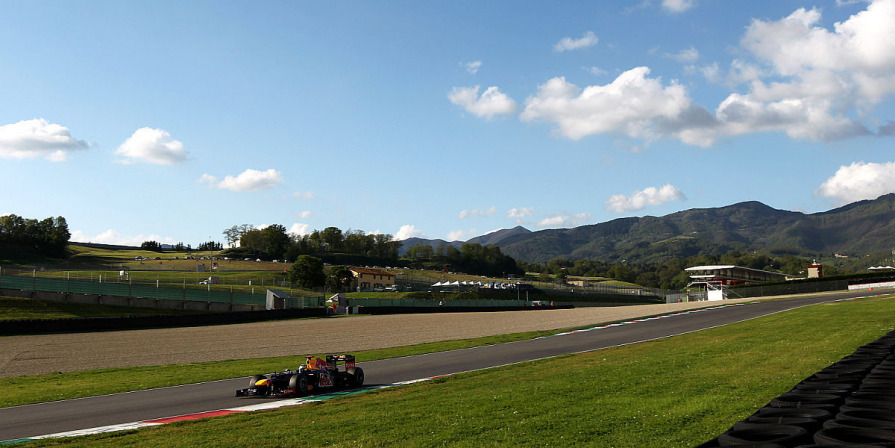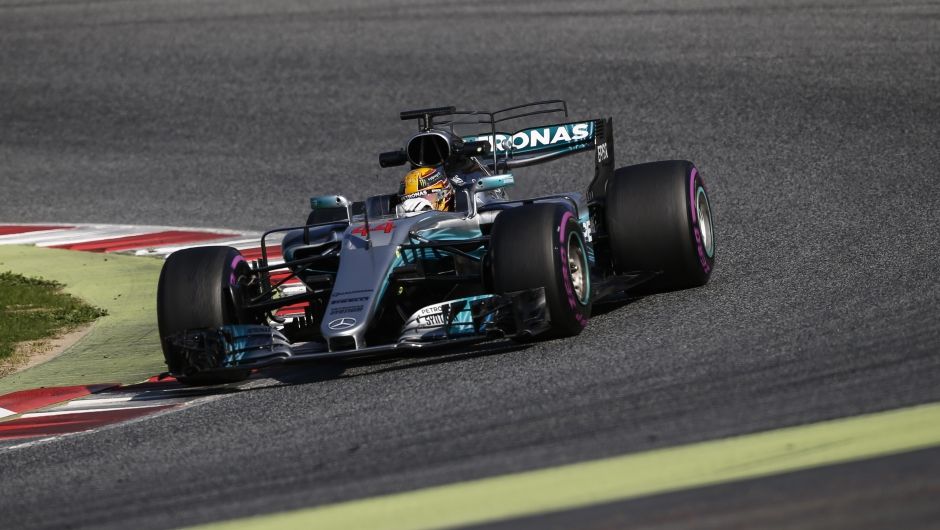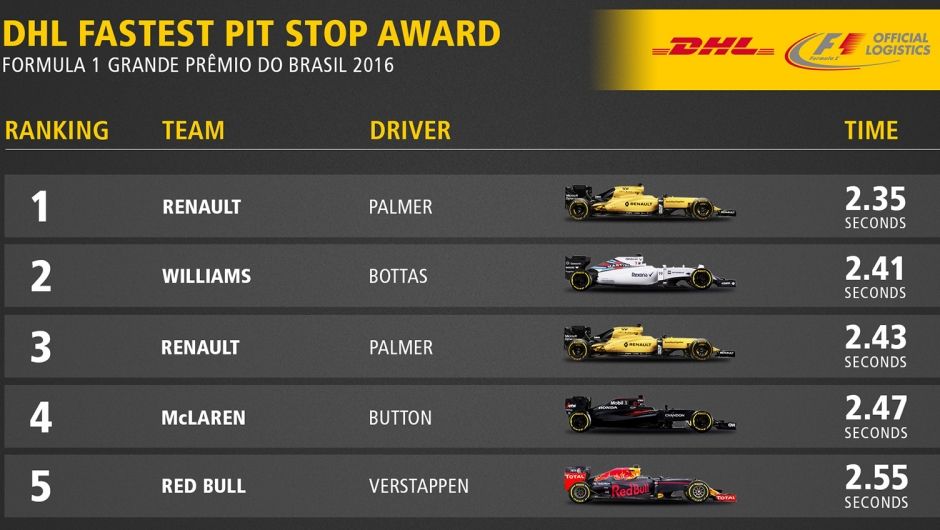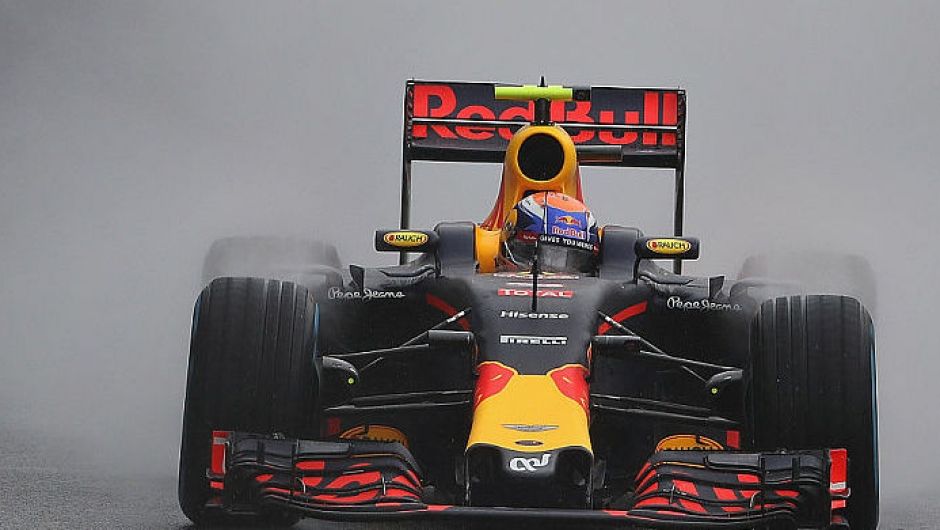Formula 1®
A history of Formula 1 testing: from Barcelona, through Le Castellet, to Mugello
Testing for the new Formula 1 season starts on Monday in Barcelona – delivered by DHL, the Official Logistics Partner of Formula 1®. Before the 2017 season starts, top drivers will perform test runs exclusively at the Circuit de Barcelona-Catalunya, a track that the drivers and teams know like the back of their hands. A number of other tracks have also hosted Formula 1 testing days in the past. As testing starts, we take a look at the circuits that have been especially popular for this in the past.
New drivers, teams & regulations: What’s new in the 2017 FIA Formula One World Championship season
Circuit Paul Ricard – Le Castellet
Probably the best-known test track in the world earned its reputation as a testing mecca soon after opening in 1970. Thanks to a mild winter climate, its large number of track variations and its unusually high safety standards, the Circuit Paul Ricard was popular with teams from various racing series. After the last Grand Prix held in the south of France in 1990 and the Motorcycling World Championship’s move to world-famous Le Mans for the 2000 season, the track lost much of its pulling power.
However, the historic circuit experienced something of a rebirth when the heirs of Paul Ricard sold the arena to Bernie Ecclestone’s French company Excelis S.A. in 1999. With massive investment, the track was rebuilt into an advanced test track. From October 2001, the newly founded Toyota Formula 1 team held an exclusive contract to use the facilities for the first time, after which other racing teams were granted access to the track in February 2002.
Since then, Le Castellet has been a top destination for Formula 1 teams and entrants to the 24 Hours of Le Mans – despite the exorbitant fees it charges during the winter break. At the end of January 2016, Pirelli conducted a tyre test at the circuit in the south of France. The Circuit Paul Ricard is also famous for its striking, coloured run-out zones, consisting of abrasive tarmac strips that are designed to slow cars down. From 2018, the Formula 1 competition will return to Le Castellet for the French Grand Prix.

Autodromo Internationale de Mugello
The Italian race track in Mugello is officially owned by Ferrari and was Scuderia’s home track during unlimited testing was permitted. However, other racing teams from Formula 1 and other series were also allowed to hire the track. The over 5 km track is located just north of Florence and is popular with the driving greats, despite the fact that no race has ever been held there.
Besides the annual spectacle of MotoGP’s Italian Grand Prix, the track is associated with a number of famous events: Jean Alesi’s serious test crash in 1994, the presentation of Michael Schumacher’s last Ferrari in 2006 and Schumacher’s 2009 test drives when he stepped in to replace Ferrari’s seriously injured Felipe Massa, to name but a few.
Ex-Ferrari Chairman Luca di Montezemolo also helped Mugello to make headlines. He spent years trying to bring the Italian GP to the Ferrari home track. After the testing ban was introduced, he famously complained that he had his own test track in Mugello and in God’s name wanted to use it for testing.

Pista di Fiorano
The race track in Fiorano near Modena and Bologna is privately owned by Ferrari and has always been used exclusively by Scuderia. Rumour has it that Enzo Ferrari, who died in 1988, built the course in order to watch his best-loved cars and drivers every day without the ‘distraction’ of competition on the race track. Officially, however, Fiorano is the birthplace of every Ferrari F1 model, all of which complete their shakedown here. Previously, the Autodromo di Modena would have been used for these kinds of events, but over time it was unable to continue meeting Ferrari’s requirements.
Fiorano is also known for several high-profile motorsport events. After his serious fire accident at the Nürburgring in 1976, Niki Lauda made his comeback at this track behind the wheel of a Formula 1 car. During test drives, motorcycle superstar Valentino Rossi completed a lap under the magic one-minute mark in a Ferrari Formula 1 car. Finally, Michael Schumacher described Fiorano as practically his ‘living room’ and spent most of his testing time there.

Circuit de la Comunitat Valenciana Ricardo Tormo
The track is located around 20 km away from the Spanish city of Valencia and has hosted races and tests for most of the world’s most famous motorsport series. The circuit was named after the two-time world champion 50ccm motorcycle racer Ricardo Tormo, who was born near Valencia.
Formula 1, MotoGP, the DTM and the World Superbike often use the track for testing due to its favourable winter climate and excellent track conditions. In his Formula 1 comeback with Mercedes, Michael Schumacher took off on the narrow, winding circuit and completed his first official kilometre in a Silver Arrow. The track is also hailed as a paradise for fans, as virtually the entire circuit is visible from the stands.

Autodromo Vallelunga Piero Taruffi
The Italian Vallelunga race track, named after the former Formula 1 driver Piero Taruffi, is located just under 30 km north of Rome. However, after a number of renovations and safety improvements, the circuit was only officially approved by the FIA 53 years after completion in 2004.
From then on, the track welcomed many teams as a test venue, as its favourable weather and short distance from the teams’ headquarters compared to Spanish tracks simplified logistics and testing. Vallelunga was particularly favoured by Ferrari, Williams and Toyota, primarily due to its striking similarities with the street circuit in Monaco. The venue was often used by top teams in central Italy to prepare for the most important Grand Prix of the year.

Portimao/Estoril
Portugal has also been popular for Formula 1 testing thanks to its extremely mild winter climate. Both the Autodromo Internacional do Algarve in Portimao and the Autodromo do Estoril have been used as test tracks by the top teams in motorsport. While the track in Portimao was only completed and approved by the FIA in 2008, Estoril hosted Portugal’s Grand Prix from 1984 to 1996 – but lost its prized spot in the racing calendar due to a lack of renovations. Despite this, teams like McLaren, Benetton and Ferrari conducted tests more often in the little country on the Iberian Peninsula in subsequent years.











Content from disqus has been blocked because you did not allow to load it.
Loading the blocked content will adjust your privacy setting and content from this service will not be blocked in the future.
You have the right to revoke or change your decision at any time.
Posting Guidelines
All communications on Logistics of Things should be appropriate for a professional community, respecting the diverse views of individuals from different backgrounds. We will review all comments and reserve the right to terminate or restrict access to user's account and to delete any content posted through it, without notice and at our discretion, if we deem it to be overly promotional, offensive, or off topic.
All posting become property of DHL.